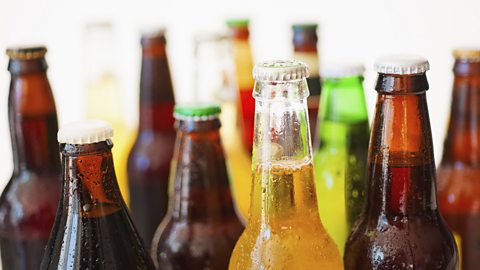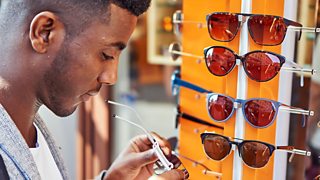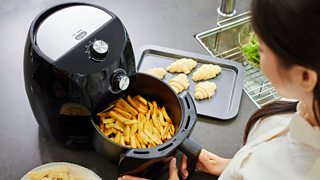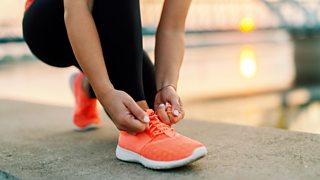Can you feel drunk without drinking alcohol?
All Consuming is the ���˿��� Radio 4 series where Charlotte Williams and Amit Katwala explore our culture of consumption through products and services that have changed the world.
With more and more people going 'NOLO', Charlotte and Amit take a look at the growing thirst for no and low-alcohol drinks, a market that is now worth billions.
They explore origins dating back to the Middle Ages, find out the origin of the phrase 'small beer' and investigate a new booze-free beverage that claims to make us feel tipsy.
And – after their journey through the past, present and future of an ever-growing industry – they ask, is it really possible to feel drunk, without the hangover?
Sales for no and low-alcohol drinks are in the billions – and growing fast
Our drinking habits are changing. Sales of no and low-alcohol drinks in 10 key global markets – including the UK, US and Australia – reached almost $10 billion in 2021. According to global drinks market analyst The IWSR, this is up from $7.8 billion in 2018. That's a $2 billion increase in just three years.
However, although consumption of non-alcoholic drinks may be hitting an all-time high, they're hardly new…

In the Middle Ages, low-alcohol beer was more popular than water
In medieval Britain and Europe, soft drinks weren't really a thing. "If you didn't want to drink alcohol you drank water, which was often polluted," explains drinks historian Jane Peyton.
The safe solution was a low-alcohol drink known as 'small beer', which had an alcohol by volume of around 2-3%. It didn't come with an age restriction. "Children would drink it, your grandma, everyone drank it if you weren't going to drink full-alcohol beer," states Jane. As Charles Darwin's father Erasmus once wrote: "For the drink of the more robust children, water is preferable. And for the weaker ones, small beer."
You could also get small cider – known as 'ciderkin – but this was very much a rural drink. If you lived in an urban area, then small beer was "your only choice, in many cases," says Jane.
The first non-alcoholic beers of the modern era tasted like 'soapy water and cardboard'
In the US, Prohibition and the temperance movement lead to some of the most popular non-alcoholic drinks in history. Coca-Cola was created in the late 19th Century when confederate colonel John Pemberton removed the alcohol from his 'coca wine nerve tonic'. Dr Pepper then arrived in 1885 and Canada Dry Ginger Ale in 1904.
Here in the UK, the road to palatable alcohol-free alternatives is a bit more bumpy.
"In the 1980s in Britain, a couple of non-alcoholic beer brands were launched," recounts Jane Peyton. "One was called Barbican and one was called Kaliber." Unfortunately, she says, the rather watery beer tasted like "soapy water and cardboard".
And the beers, which came in little bottles, just didn't prove popular with the pint-drinking population then. "For years after that there was this really scathing attitude towards beers like that, because they didn't taste very good."
"That's all changed now," says Jane. Today, no and low-alcohol alternatives taste and look good. Brands focus on their products being beautiful because they need to stand out – if not on the shelf, then on social media.
A new product claims to create that tipsy feeling, without the alcohol
With new developments in science, NOLO drinks may be on the cusp of a revolution.
It might finally be possible to get in the party mood without the risk of a hangover.
GABA, or gamma-aminobutyric acid, is a neurotransmitter in the human brain, which blocks specific signals in our central nervous system. In humans it creates a calming effect, which makes people feel sociable and reduces those feelings of anxiety, stress and fear that we get in unfamiliar situations – much like alcohol.
One company called GABA Labs have created a compound that targets the GABA receptors in the brain. They call it Alcarelle. This compound is the magic ingredient in their new drink, Sentia, and is largely plant-based.
"The relaxing effect of herbs has long been known," explains David Nutt, professor of neuropsychopharmacology at Imperial College London and chief scientist at GABA Labs. "But what wasn't known is that those effects for some herbs are mediated because the herbs make substances which work to stimulate the GABA system in the brain."
There are 11 different herbs in a bottle of Sentia. "A number of them work on the GABA system," explains the scientist. "Others work to facilitate the uptake of the GABA herbs from the stomach and the intestine, and others serve to facilitate the transport of these from the blood into the brain. And then of course we put some other herbs in to give it a flavour because there’s no point having a drink that works if people don’t like the taste."

Can a non-alcoholic drink reduce social anxiety?
A company is working on a drink that mimics the calming affects of alcohol.
By reducing anxiety, the drink creates an 'upwards spiral of sociability'
"When people go to drink there's usually some anxiety, particularly if you're meeting strangers," says David. "So what our drinks are designed to do is to reduce social anxiety by dampening down the brain's circuits which make us anxious socially.”
The GABA system equilibrates our brain and takes away that anxiety, he says. Once that’s removed, you begin to interact with people in a more uninhibited way. "And then you get into a very interesting reciprocal circuit, where the interactions themselves are rewarding and pleasurable and so then your mood goes up as a result."
David believes that the GABA component of their drink facilitates this "upwards spiral of sociability", and is backed up by the use of AI facial recognition technology: "We're filming people who are engaged in social interactions whilst they’ve been drinking our drinks and we can see that social engagement, social interactions, smiling and eye contact are all enhanced."
NOLO drinks may be age-old, but new science is changing the way they interact with us and we with them. It seems it might finally be possible to get in the party mood without the risk of a hangover.
Find out more about Charlotte and Amit's adventures in the world of non-alcoholic drinks by listening here.
The information contained in this article was correct at the time of broadcast on 1 September, 2022.

More articles from Radio 4
-
![]()
Why are so many of us going NOLO?
The growing market for no and low-alcohol drinks
-
![]()
Is it worth paying for expensive sunglasses?
Eight things to consider before splashing out on new shades
-
![]()
Can cooking with an air fryer save you money?
Seven things to consider before investing in one
-
![]()
Six things to know before buying running shoes
Greg Foot looks at whether it's worth upgrading your trainers





